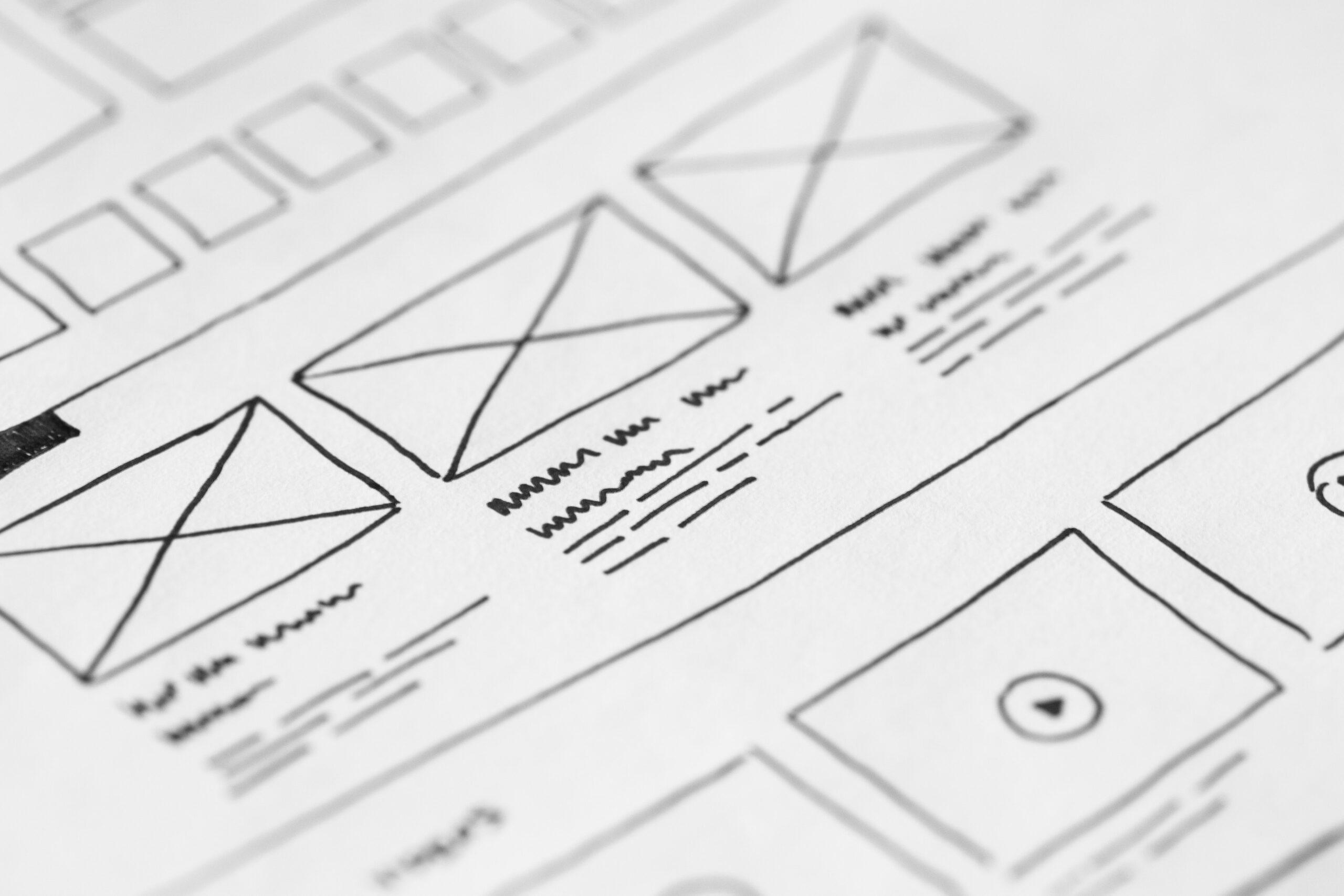Are you sitting there and wondering “Should I redesign my website?”. Well, first impressions matter, especially in the vast digital landscape. Your website is often the first interaction potential customers have with your brand, and within seconds, they form opinions that can make or break their decision to stay. Is your website leaving a lasting impression? If not, don’t worry! In this article, we’ll delve into the top five reasons why a website redesign can help you revamp your online presence and create an irresistible digital front door in 2023.
1. enhance user engagement and improve search engine visibility
CONTENT OPTIMIZATION: Improve the structure, readability, and relevancy of your website’s content for better user engagement and search engine visibility.
In the ever-evolving digital landscape, to redesign your website means more than just giving it a fresh look. It’s an opportunity to optimize your content for enhanced user engagement and improved search engine visibility. By carefully considering the structure, readability, and relevancy of your website’s content during the redesign process, you can create a seamless and compelling user experience.
- Website Structure
- focus on organizing your content logically by using clear navigation menus, intuitive categorization, and a hierarchical page structure that allows visitors to easily navigate and find the information they need.
- Implement a well-designed sitemap, optimize URL structure, and utilize breadcrumbs. As a result, these things can further enhance the website structure and make it easier for both users and search engines to understand and navigate your website.
- Readability
- Firstly, use legible fonts, appropriate font sizes, and a sufficient contrast between text and background colors. Break up large blocks of text with headings, subheadings, bullet points, and paragraphs to create a visually appealing and scannable reading experience.
- Keep your writing style concise, avoid jargon, and use plain language that resonates with your target audience. Additionally, employ proper grammar, punctuation, and formatting techniques to ensure clarity and ease of comprehension.
- Relevancy
- Conduct thorough keyword research to identify the terms and phrases your target audience uses when searching for information related to your website’s content. Incorporate these relevant keywords naturally into your headlines, subheadings, and body text to increase the relevance of your content.
- Regularly update and refresh your content to ensure it aligns with current industry trends, addresses your audience’s pain points, and provides valuable and up-to-date information. Lastly, consider integrating multimedia elements such as images, videos, and infographics to enhance the relevancy and engagement of your content.

2. with good Website redesign, foster loyalty and encourage visitors to return
IMPROVE USER INTERFACE – Enhance navigation, ease of use, and overall satisfaction for your website visitors.
When it comes to the success of your online presence, the user experience is paramount. By enhancing navigation and creating an intuitive user interface, you can guide users seamlessly through your website, helping them find what they’re looking for effortlessly. Therefore, a well-thought-out redesign can optimize the ease of use, ensuring that actions like filling out forms or making purchases are streamlined and hassle-free. In conclusion, by prioritizing user experience, you’ll leave a lasting impression on your visitors, fostering loyalty and encouraging them to return. So, take the leap and redesign your website to create a memorable user experience that captivates your audience and keeps them coming back for more.
- Enhance navigation
- implement a clear and consistent menu structure that organizes your content logically. Also, use descriptive labels for navigation links, ensure they are easily clickable, and include a search function to help users find specific information quickly.
- incorporate visual cues such as dropdown menus, breadcrumbs, and clickable buttons to guide users through different sections of your website. However, conduct user testing to identify any navigation issues and make necessary adjustments to enhance the usability of your website.
- Intuitive User Interface
- employ a clean and minimalist design that reduces clutter and focuses on essential elements. Use visual hierarchy to highlight important information, and align interactive elements such as buttons and links with user expectations.
- consistently apply design patterns and conventions to ensure familiarity for users. Utilize appropriate labeling, icons, and tooltips to provide clear instructions and guidance. Conduct user research and gather feedback to continuously refine and optimize the user interface for a seamless experience.
- Ease of Use
- reduce the number of steps required to complete key actions on your website, such as making a purchase or submitting a form. Streamline the user flow by eliminating unnecessary form fields and providing clear instructions at each stage.
- incorporate responsive design principles to ensure your website is accessible and user-friendly across different devices and screen sizes.


3. redesign your website to reach a wider audience
MOBILE RESPONSIVENESS – Optimize your website for mobile devices, as more people are accessing the web via smartphones and tablets.
With the increasing number of people accessing the web through smartphones and tablets, ensuring mobile responsiveness is crucial for reaching and engaging a wider audience. This includes implementing responsive layouts, touch-friendly navigation, and optimizing load times for mobile networks.
- Responsiveness
- utilize responsive web design techniques that allow your website to adapt and scale smoothly across different screen sizes. This includes using flexible grids, fluid images, and CSS media queries to ensure optimal layout and content display on devices.
- optimize touch-friendly navigation by incorporating large, easily clickable buttons and menus that are spaced appropriately for touch interaction. Avoid using hover effects that may not work on mobile devices and ensure that all interactive elements are well-sized and accessible without the need for precise tapping. Also, test your website on various mobile devices and browsers to ensure a consistent and seamless experience for mobile users.


4. Captivate and leave a lasting impression
ENHANCE VISUAL APPEAL – Refresh your website’s design, incorporating modern aesthetics and engaging visuals.
The importance of enhancing the visual appeal of your website cannot be overstated. By refreshing your website’s design and incorporating modern aesthetics and engaging visuals, you can captivate visitors and create a lasting impression. A visually appealing website not only grabs attention but also conveys professionalism, credibility, and a sense of innovation. From choosing a contemporary color palette and typography to utilizing high-quality images, illustrations, and videos, the design elements you incorporate should align with your brand identity and resonate with your target audience.
- Visual Appeal
- strike a balance between aesthetics and functionality. Keep the design clean, uncluttered, and visually pleasing, with ample white space to allow content and visuals to breathe. Use high-quality images and videos that are relevant to your brand and resonate with your target audience.
- Incorporate visual hierarchy by utilizing different sizes, colors, and placements to guide users’ attention and highlight key elements. In addition, experiment with visual storytelling techniques, such as parallax scrolling or interactive animations, to create an immersive and engaging experience.
- Colors, Typography, Design Elements
- First, start by understanding your brand identity and the emotions you want to evoke using color psychology. Consider your target audience’s preferences and demographics, and select colors that align with your brand values while appealing to your audience. Use color theory principles to create harmonious combinations and balance contrasting elements for visual interest. Lastly, establish primary and secondary colors and use them consistently throughout the website.
- with typography, consider the readability, legibility, and personality of the fonts, and choose a combination that creates a harmonious hierarchy for headlines, subheadings, and body text. Additionaly, use different font weights, styles, and sizes to create visual contrast and guide users’ attention.
- Identify design trends that align with your brand’s aesthetics and appeal to your audience. Select relevant and visually engaging elements such as icons, illustrations, or animations that enhance the user experience and convey your brand’s message effectively. Also, make sure to maintain consistency in the use of design elements throughout your website.


5. Improve Search Engine Visibility
SEO – Implement SEO best practices during the redesign process to improve search engine rankings.
Search engine optimization (SEO) plays a pivotal role in driving organic traffic to your website. If you’ve decided to redesign your website, it is essential to implement SEO best practices. As a result, this will ensure that your new design captivates users and boosts search engine rankings. Conducting thorough keyword research, optimizing meta tags, headers, and URLs is crucial. To sum up, by prioritizing SEO during the redesign process, you can position your website for success by attracting more organic traffic, reaching your target audience effectively, and ultimately driving greater conversions.
- Keyword Research
- First, identify relevant topics and keywords that align with your brand and resonate with your audience. Use keyword research tools to explore search volume and competition levels.
- Choose keywords that strike a balance between search volume and relevance. Also, ensure they align with your brand identity and target audience’s interests. Incorporate these keywords naturally into your website’s content, including headings, subheadings, and body text. Additionally, make sure to maintain a conversational tone that appeals to both users and search engines.
- Optimizing Meta Tags, Headers, and URLs
- First, craft compelling meta tags that accurately describe your webpage’s content, incorporating relevant keywords and enticing language that encourages users to click. Use unique meta tags for each page, aligning them with the specific content and maintaining consistency with your brand voice and messaging.
- Optimize headers by utilizing relevant keywords in a natural and meaningful way, ensuring they provide a clear and organized structure. Also, keep headers concise, informative, and aligned with your brand’s tone and target audience’s preferences. Additionally, create user-friendly and SEO-friendly URLs that include descriptive keywords and accurately reflect the content of the page, keeping them concise and easy to read.


Website Redesign – Conclusion
Understanding human psychology is essential when it comes to the success of your online presence in 2023. A website redesign becomes paramount in this context, as it allows you to tap into the innate preferences and behaviors of your target audience. Humans are visual creatures, drawn to appealing designs that evoke positive emotions. By revamping your website’s aesthetics, you can instantly captivate visitors, make a memorable first impression, and forge a deeper connection with your brand. Also, when you optimize the layout, enhance navigation, and prioritize mobile responsiveness, you cater to users’ natural inclination for seamless and effortless experiences.
Furthermore, a well-designed website cultivates trust, credibility, and professionalism, establishing a strong foundation for building lasting relationships with your audience.
So, embrace a website redesign and unlock the potential to captivate, engage, and convert your visitors into loyal customers!
Let’s Redesign Your Website! fill out our form at: https://vigesco.org/contact/
If you don’t have a website yet, get started HERE https://namecheap.pxf.io/GmZg72
